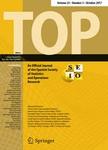版权所有:内蒙古大学图书馆 技术提供:维普资讯• 智图
内蒙古自治区呼和浩特市赛罕区大学西街235号 邮编: 010021

作者机构:Univ Politecn Madrid Dept Arquitectura & Tecnol Sistemas Informat Madrid Spain Univ Politecn Madrid Dept Inteligencia Artificial Madrid Spain Harvard Univ Div Hlth Sci & Technol Boston MA 02115 USA MIT Boston MA USA
出 版 物:《TOP》 (TOP:西班牙统计学与运筹学学会杂志)
年 卷 期:2008年第16卷第2期
页 面:345-366页
核心收录:
学科分类:0202[经济学-应用经济学] 02[经济学] 020208[经济学-统计学] 1201[管理学-管理科学与工程(可授管理学、工学学位)] 07[理学] 0714[理学-统计学(可授理学、经济学学位)]
基 金:Spanish Ministry of Education and Science [2010-CSD2007-00018] National Library of Medicine [1R01LM009520-01] NIH Komen Foundation [FAS0703850] TIN2007-62626 TIN2007-67148 TIN2005-03824
主 题:Logistic regression Evolutionary algorithms Estimation of distribution algorithms Calibration and discrimination 62J12 90C59 90C29
摘 要:Logistic regression is a simple and efficient supervised learning algorithm for estimating the probability of an outcome or class variable. In spite of its simplicity, logistic regression has shown very good performance in a range of fields. It is widely accepted in a range of fields because its results are easy to interpret. Fitting the logistic regression model usually involves using the principle of maximum likelihood. The Newton-Raphson algorithm is the most common numerical approach for obtaining the coefficients maximizing the likelihood of the data. This work presents a novel approach for fitting the logistic regression model based on estimation of distribution algorithms (EDAs), a tool for evolutionary computation. EDAs are suitable not only for maximizing the likelihood, but also for maximizing the area under the receiver operating characteristic curve (AUC). Thus, we tackle the logistic regression problem from a double perspective: likelihood-based to calibrate the model and AUC-based to discriminate between the different classes. Under these two objectives of calibration and discrimination, the Pareto front can be obtained in our EDA framework. These fronts are compared with those yielded by a multiobjective EDA recently introduced in the literature.